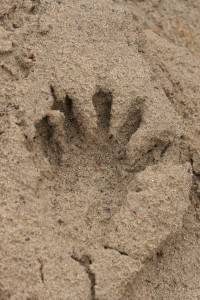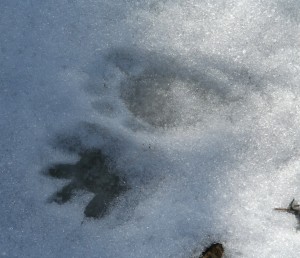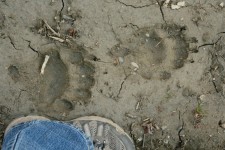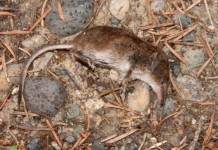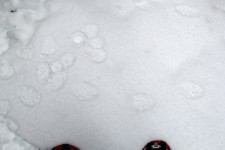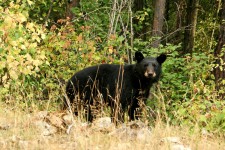Small, five-toed tracks in the snow that are suggestive of miniature bear tracks amble away from an empty dog food dish outside a door–the masked bandit strikes again. Under the cover of darkness, the masked bandit raids what food sources it can find in the winter, including pet food and garbage.
Called a masked bandit because of the black markings on its face, a raccoon is seldom seen in the winter except for their tracks in the snow.
While their two-to-four-inch tracks may resemble a bear’s tracks in miniature, they don’t sleep away the winter like bears. Instead they only den up when the snow becomes deep or during cold spells.
Raccoons are similar to bears in the way they prepare for winter. Both acquire layers of fat in late summer and fall to survive the winter.
Despite the raccoon’s omnivore diet, many of it’s food sources disappear in the winter, so it has to depend on fat reserves to survive. Unless it can find a steady source of pet food or garbage.
During winter, raccoons aren’t likely to find bird, turtle or waterfowl eggs or even reptiles, frogs and insects to eat.
Raccoons eat almost anything but they are especially fond of food from the water. They often hunt along streams or marshes to find meals of frogs, fish, snails, crayfish, amphibians, aquatic invertebrates and even young muskrats.
When a raccoon catches prey in or near water, it may manipulate it in the water, giving the impression of washing it. However, scientists think that a raccoon’s sense of touch may be better when it’s feet are wet.
A raccoon’s feet have five long, dexterous digits that enables it to grasp and manipulate objects. The long toes in combination with sharp, non-retractable claws make raccoons good climbers. Like squirrels, they can rotate their hind feet 180 degrees to descend trees head first.
Raccoons climb trees to rest in during the day, either on a branch or in a cavity. A raccoon’s scat can be found at the base of a climbing tree because raccoons defecate before climbing a tree. Scat can also be found on roofs because they defecate before entering a structure.
Resting sites can also include an abandoned mammal’s burrow, a building, abandoned vehicle, hollow log or cavity among rocks. Typically a raccoon will be by itself, unless it is a mother with young or it is extremely cold. Groups of 20 raccoons may share a den during a cold snap.
Young will stay with their mother through their first winter. Young raccoons are the most likely to die from starvation in late winter and early spring because they have fewer fat reserves to draw on due to their smaller body size.
Young raccoons also have to be wary of eagles and large owls, the latter being nocturnal like raccoons. Birds aren’t a raccoon’s only predators. They are preyed upon by cougars, bobcats, coyotes and domestic dogs.
Being nocturnal and crepuscular (active at dawn and dusk) helps raccoons avoid some predators and is why they reduce their activity on full moonlit nights. Being active under the cover of darkness allows the masked bandit to strike again.

